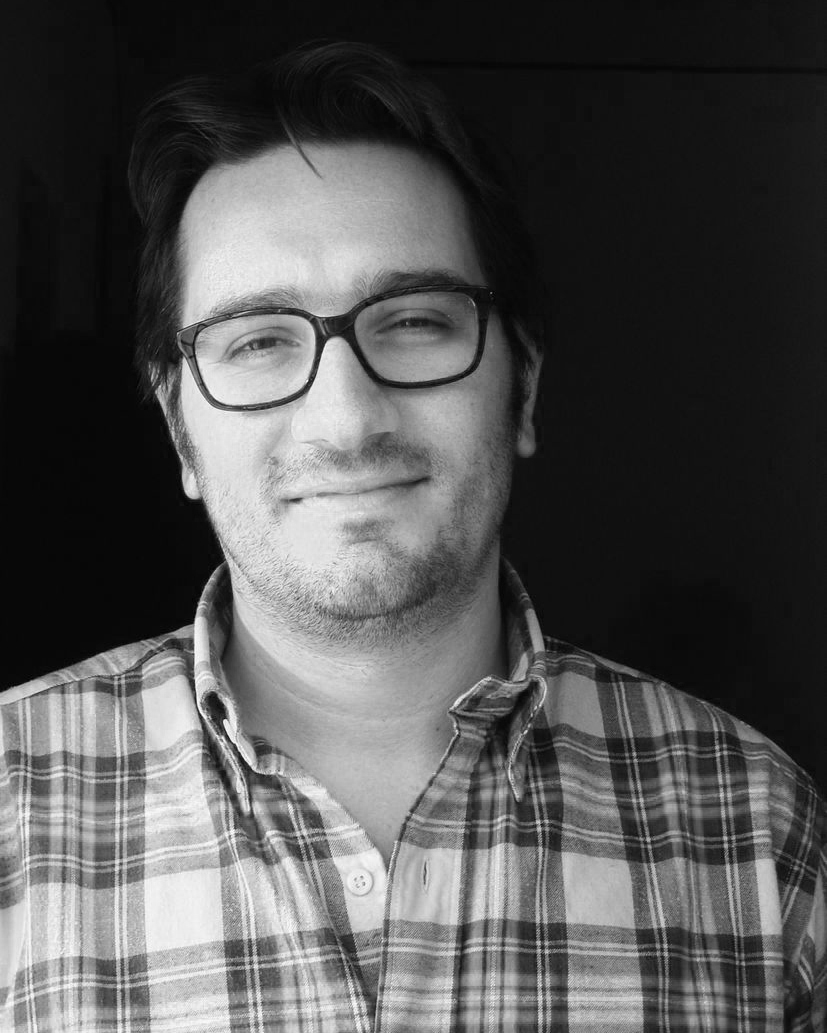CHRISTIAN CALIANDRO
Generazione Critica: Your role as a teacher at the Academy of Fine Arts in Foggia in the last six years, and now in Florence, and the direction of the project “La Chimera – Contemporary Art School for Children” allows you to have feedback with students of different age and different approaches to art. Considering these teaching experiences that characterize your career, what are the inputs and reflections that arise from the continuous comparison with your students?
Christian Caliandro: Teaching is an integral and fundamental part of my research. Before 2016 I also taught at the IUAV in Venice and at the IULM in Milan during my postdoctoral research fellowships. I have therefore been in contact with twenty-year-old students for more than ten years, and in this period I have also been able to see the evolution of these two generations now. Virtually every article, every essay, and of course the Stories of Contemporary Art manual (Mondadori Education 2021), were born from constant discussion and dialogue with students, during the courses (both those of a more historical nature and those more thematic). In addition, these students are already authors with a poetics in many cases quite defined, and above all they are the artists of the immediate future: for me it is therefore very important, as well as pleasant, to be continuously exposed to new ideas and perspectives.
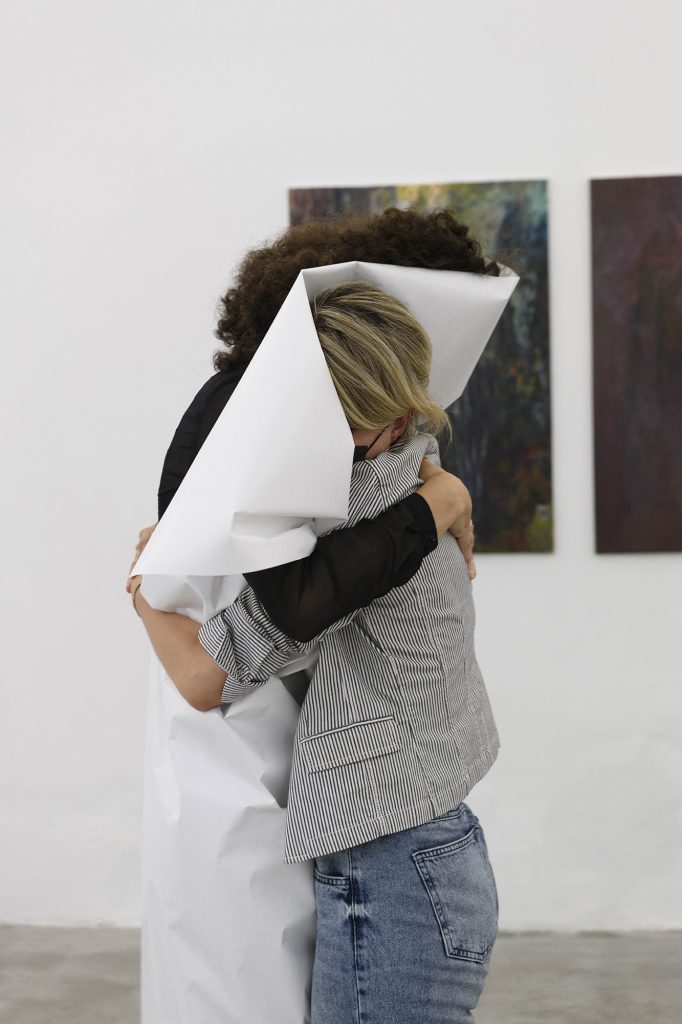
Laura Cionci, Stringersi – Ciò che rimane (2021), mostra collettiva Fragile, Monitor, Roma_photo Giorgio Benni
GC: At the same time as the experience of “La Chimera”, education in kindergarten and primary school can be a great resource for the training of young people and adults who are aware not only of the creative aspect but also of communication and use. In this sense, what are the main elements to be taken into consideration in structuring the educational program?
CC: Yes, I am strongly convinced of the centrality of contemporary art and creativity from the early years of education, together with Angela D’Urso who directs the project “La Chimera – Contemporary art school for children” at TEX-ExFadda in San Vito dei Normanni (BR). Ever since we started these residences – for midcareer artists and also for very young artists, in many cases coming from the Academies of Fine Arts – we have decided to set up these workshops for children between 6 and 12 years old. The focus of the workshops was the process rather than on the object it self, on the internal functioning of the work rather than on its “final formalization”. The result has been, from time to time, year after year, very interesting and stimulating, and also in this case the exchange between ‘great-artists’ and ‘small-artists’ was one-to-one and not trivial.
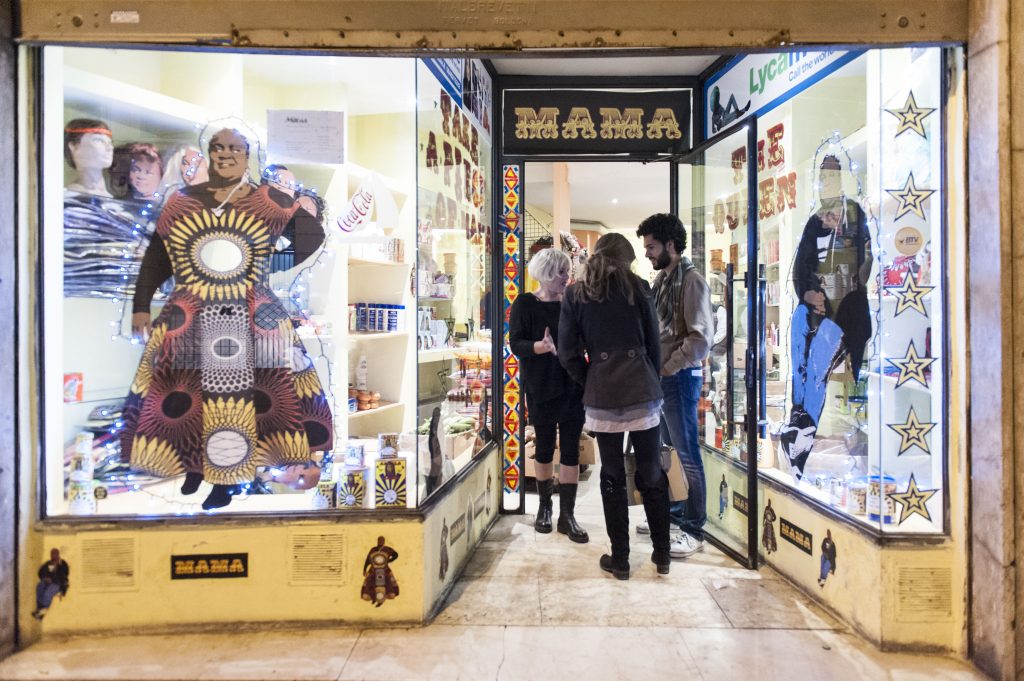
Roxy in the Box, intervento da Business Ventures, La seconda notte di quiete (2017), ArtVerona, quartiere di Veronetta
GC: Being part of the Academy somehow offers you a privileged position to observe the new trends of the younger generations of artists. In your research on the state of contemporary art, even within the Italian educational system, it seems preponderant to point out a heavy legacy of tradition rather than experimentation, as one would expect in an educational context. This often makes it difficult to make an equal comparison at least at a European level, more ‘free’ from cultural heritage and more inclined to new openings. What should be the attitude to pursue in order to achieve new developments in the Italian art scene?
CC: I must say that this ‘heaviness’ (the excessive dependence, and in many cases derivative, from the recent past and its forms: that is, often using those forms as “shells”, emptying them of their utopian significance and their original instances) is a trend that in the last fifteen years I have found above all, with some bright exceptions, in the artists of my generation and those immediately preceding and following (therefore, to be clear, forty-fifty-year-olds). It seems to me that the younger authors are in many cases freer, and that this freedom also spontaneously emerges in the formative-educational context of the Academy: they are more oriented towards an authentically – and not rhetorically – participatory dimension,, and in this way it is possible to see what happens when the work refuses to enter and be enjoyed in the traditional exhibition space, and enters the world. This is the dynamic that interests me the most.
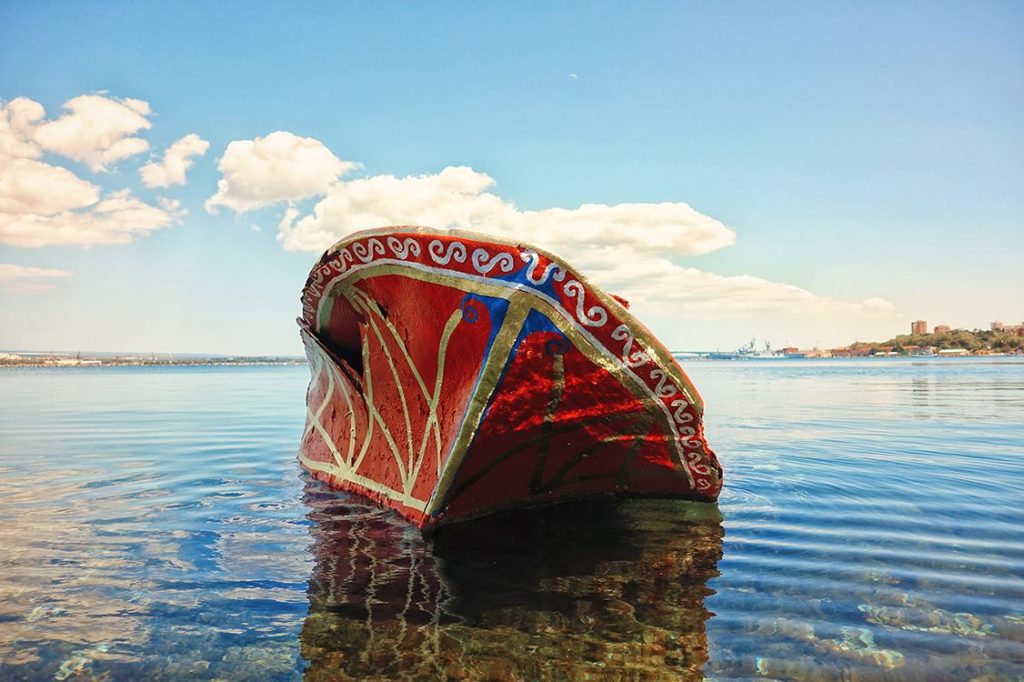
Alessandro Bulgini, Taranto Opera Viva – Relitto in Mar Piccolo (seconda versione, 2017)
GC: In the essays “Italia Revolution” (2013) and “Italia Evolution” (2018) you return to this problem by proposing a sociological analysis according to which over the last few decades there has been a slow but constant weakening of political thought that has also led to a consequential detachment from reality. All this was then irreparably poured into the cultural and artistic context that remained blocked and distant. Looking at your interventions years later, what are the changes you can see in the present? Furthermore, is it possible to recognize the weakening you are referring to in the Italian artistic context as well?
CC: That analysis had already begun with Italia Reloaded (2011), the book co-written with Pier Luigi Sacco. Over the course of the following decade – with Italia Revolution and Italia Evolution – I was able to verify how this phenomenon of real dissociation from reality, which has deep roots that must be identified on the one hand in the so-called “years of lead”, but from the other date back to the period of the Counter-Reformation, is becoming more and more accentuated, with the consequences that are there for all to see. In general, I understood something apparently trivial, but which is not so obvious: when art and culture become elements of fiction and / or self-consolation, and are not the tools of an excavation in one’s personal and collective identity, then we might have a problem. Because they dangerously move away from ‘true’ understanding of reality in its dimensions, and by taking refuge in the confirmation of what is already known – or, which is even worse, of what we suppose to know. But, of course, there have been and always are in the last ten years seeds of the future, that is, models of an alternative common way of existence, absolutely possible: in many cases, these seeds and these models are works of visual art.
GC: In 2022 you published “Broken Art” for Castelvecchi: there seems to have been a fairly important leap that led you from conceiving evolutions and revolution for the Italian cultural context to a perhaps more resigned attitude. What has changed in recent years? And how did the past difficulties also due to the pandemic affect your thinking about it?
CC: It seems to me that Broken Art continues the investigation of an evolution underway in contemporary art and society in a fairly consistent manner. Of course, language plays a much more central role in this case than in previous essays: therefore, Broken Art mixes (in an interesting way I hope) art criticism, diary, memoir, news. Having said that, the pandemic – which plays a central role in the book – was a real watershed, a gigantic interruption which, however, allowed us in some cases, as long as we were open and available, to experiment in depth and concentrated approaches and points from different views on life and art. Then, broken art has a double meaning: on the one hand it indicates institutional, elitist art, locked up in the exhibition spaces and in the so-called “system” (which, once officially declared the restart, has taken up exactly from the same full stop, or even with more enthusiasm and acceleration…). In these cases it is spectacularized and reduced to a financial instrument. But it is also – as for example suggested by Jack Kerouac about the term “beat” – broken in a more positive, constructive sense: a beaten, interstitial, marginal art and precisely for being visionary and radical, more in connection with everyday life and with everyone’s reality (that is to say: with the contemporary).
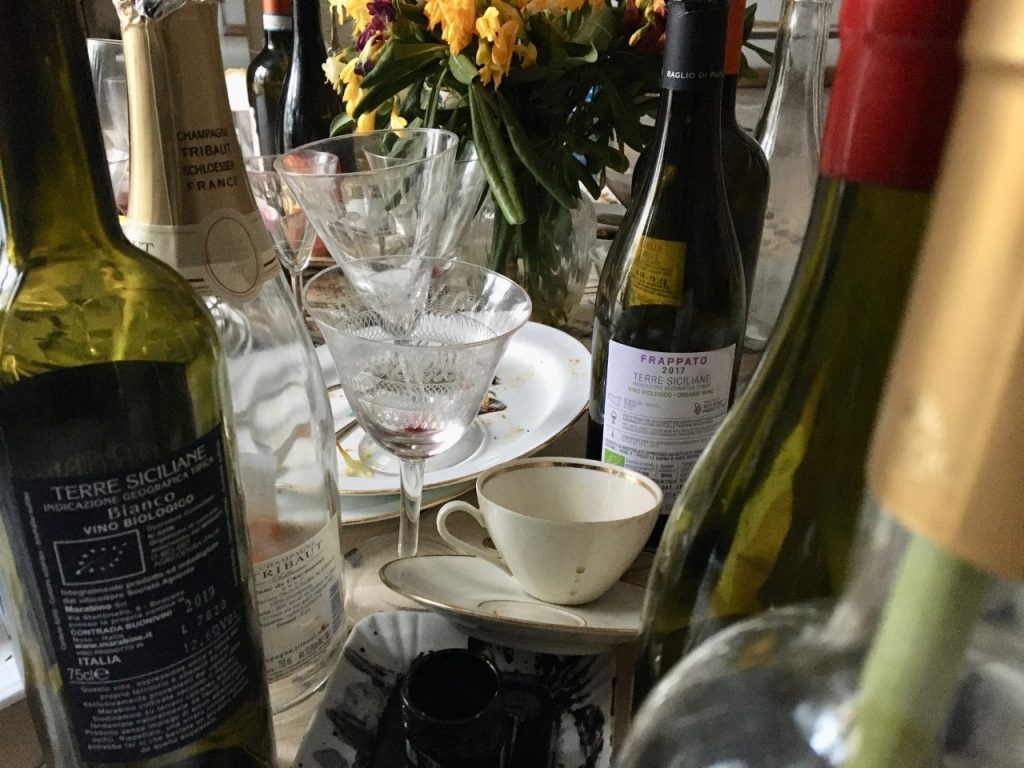
Emanuela Barilozzi Caruso, Senzazioni (2021), Palermo
GC: “Today, we are going through a historical moment that requires with equal urgency to recompose this fracture – this rupture – that has been created anew between art (…) and «what we have to do every day»” With these words, you conclude your essay “Broken Art”: in addition to attesting to this fracture, what could be times, ways and places to heal it?
CC: These words that conclude the book are those of Judith Malina, founder of the Living Theater together with Julian Beck (who in turn based her vision on Antonin Artaud’s “theater of cruelty“). In my opinion, the terms are always the same then – in the sixties and seventies, as well as in the twenties and thirties – as today. The methods, tools, languages change, but not the basic approach. The “disposition of mind”, so to speak.
Ultimately (as is already happening in part, in some cases…), it is a question of confusing and intertwining and overlapping and mixing art and existence, work and the world as much as possible. Up to almost not distinguishing one from the other.
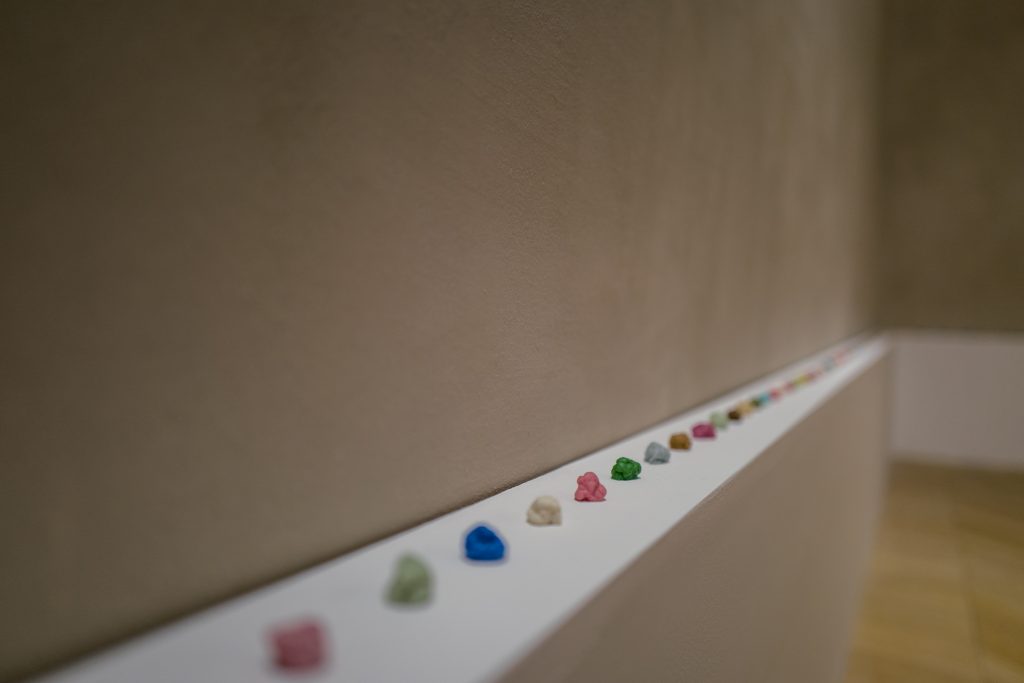
Serena Fineschi, About Decadence (Trash Series), 2019, chewing-gum, saliva_photo Elena Foresto
GC: You are also a journalist, certainly in this context of information news and cultural insights have seen profound changes too. Not only in terms of dedicated space (less and less) but also in terms of approach and reference figures. Is it just a question of an information ‘crisis’ or is it also a question of homologation? In other words, can criticism, not just art, also be considered ‘broken’?
CC: Certainly, the criticism is not only broken, but from what you see it is almost completely non-existent (and it is not just an Italian problem), except of course some valid exceptions, which however remain exceptions and do not constitute the norm. Moreover, it can be seen not only in the territory of contemporary art, but also in that of cinema, literature, music… On “Artribune” I deal almost exclusively with the pieces for Inpratica column that I take care of since the magazine was born, in 2011. This focus is structured as a series and very rarely I write reviews of exhibitions or movies.
I believe that one of the central problems of the time we are experiencing is that of the progressive simplification to which cultural objects and works of art have been and are subjected (which obviously corresponds to the simplification of the interpretation of these objects and of these works, that is of information and criticism). Today, the work of art to be effective must be “incisive” like a slogan or a refrain, it must be able to “communicate” immediately and unequivocally its meaning – which will therefore be univocal, never ambiguous … Such a system it’s not very healthy or fun – and, of course, it’s not a system that in any way favors the avant-garde or radicalism of ideas.
GC: To conclude, space for future projects: what are you working on? A book? An exhibition? Or both …?
CC: Both of them. I am preparing for the Museo della Ceramica di Montelupo Fiorentino the “exhibition” with the final results of this year’s residences (with Elena Bellantoni, Serena Fineschi and the very young Elisa Merra) of the Cantieri Montelupo project, which combines contemporary art and ceramics through relationship, that is the most immaterial element there is. It will not be a traditional “exhibition”, and will be open to visitors starting from November 26th. In addition, I am working on a new book that starts from the point where The Broken Art ended.
03/11/2022
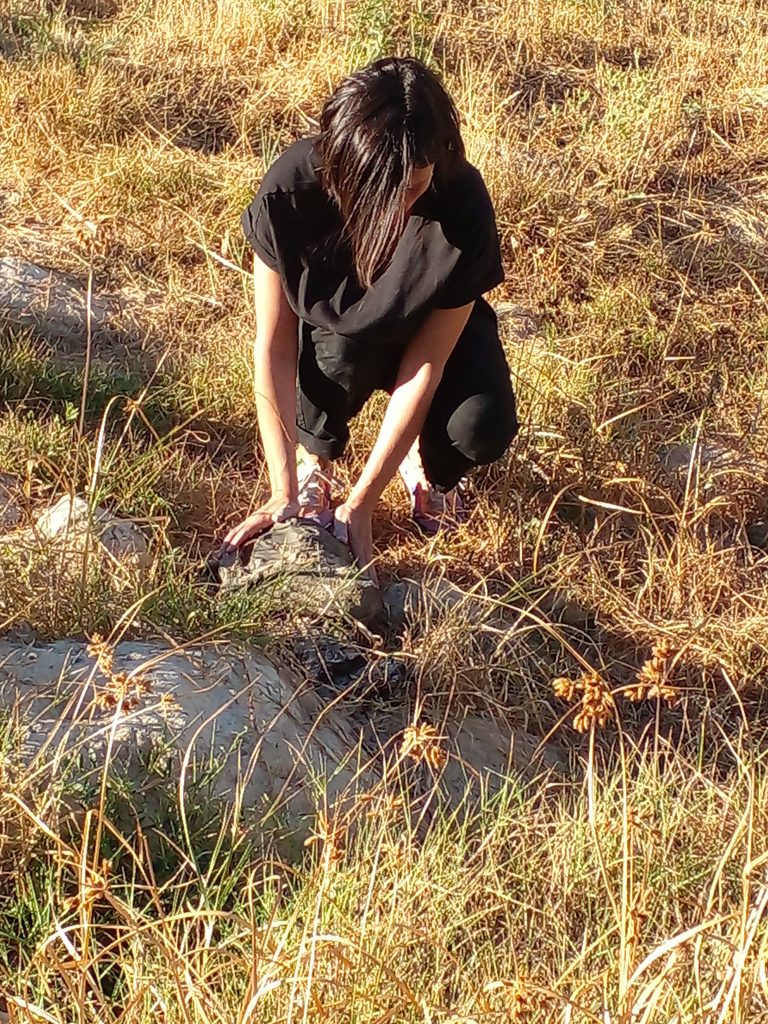
6_Elena Bellantoni, Mi sono seccata, Cantieri Montelupo, letto della Pesa, Montelupo Fiorentino, 8 luglio 2022_photo Mario Lensi

